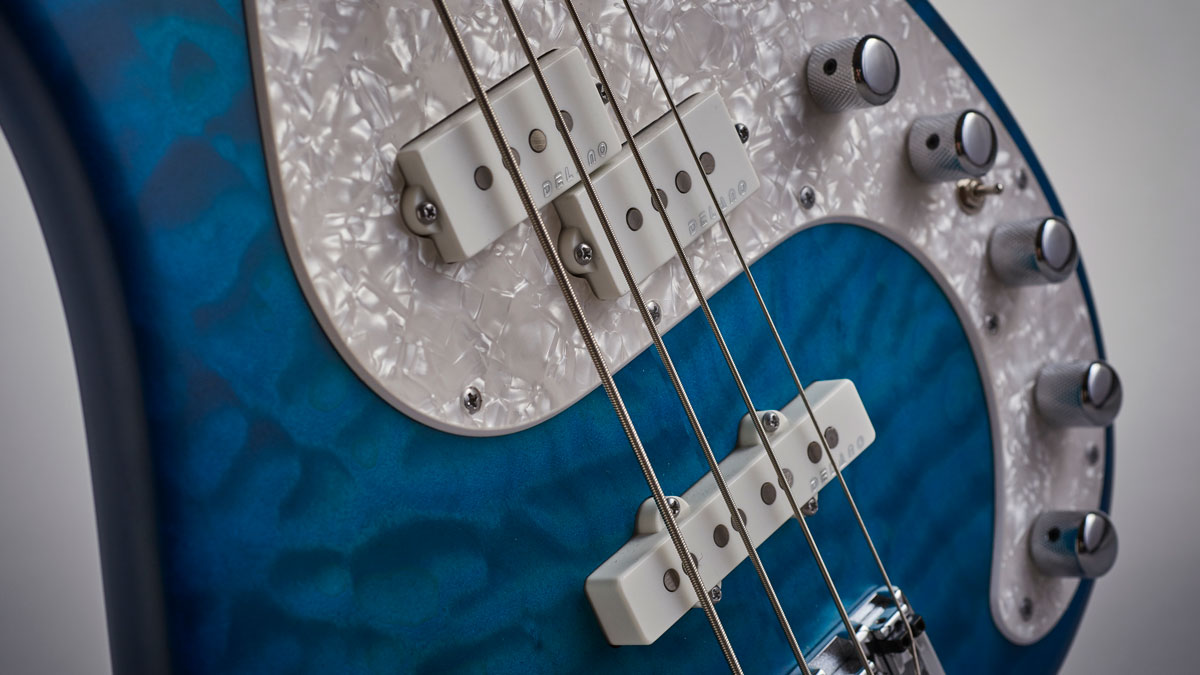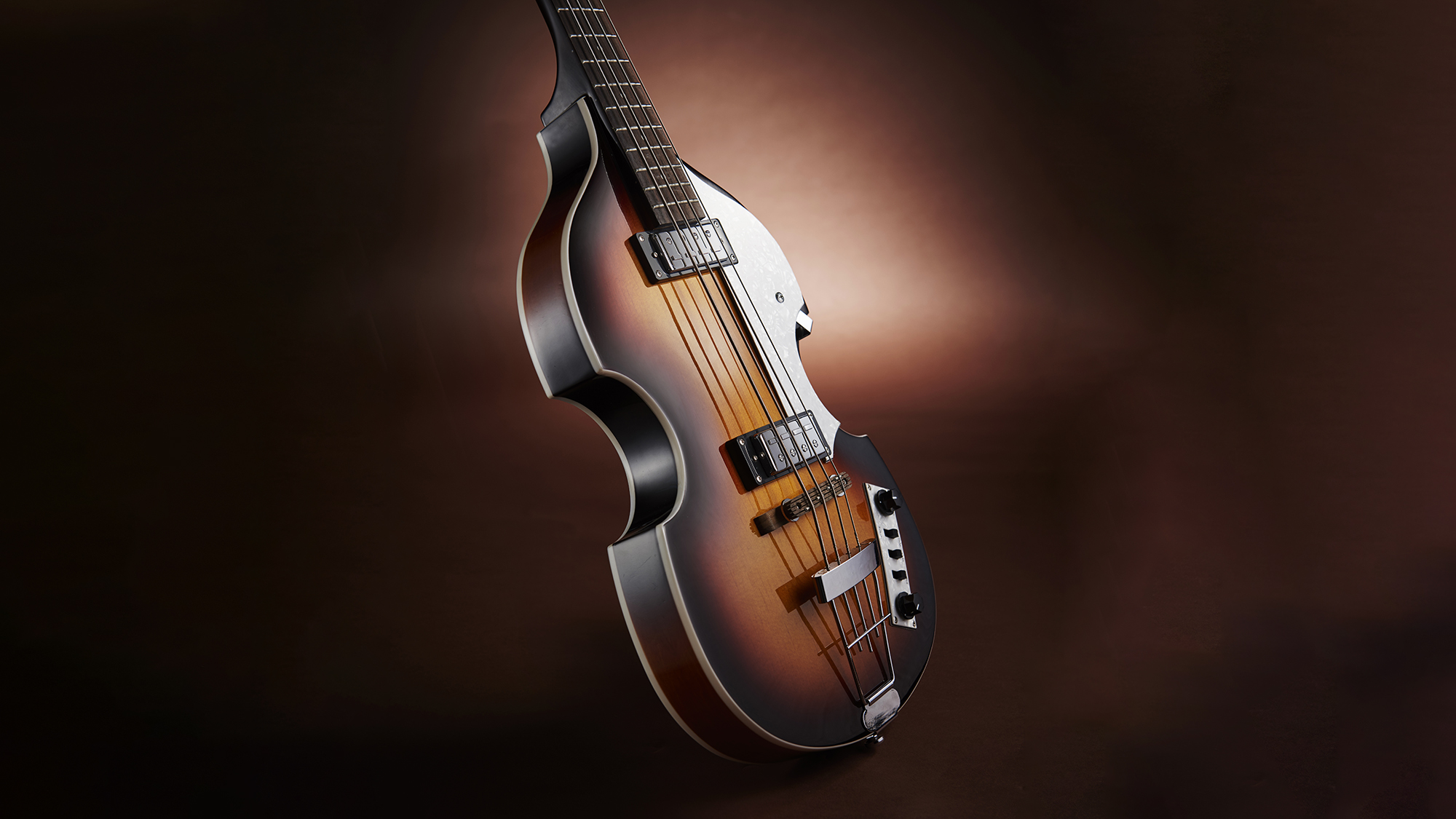Modding your P-Bass to a PJ: what you need to know
Things to think about before adding a Jazz Bass pickup to a Precision

This mod is somewhat a 'walk of shame' for me, having mutilated more Fender Precision Basses in the pursuit of 'the best of both worlds' than I care to admit. It took me years to realize the folly of my ways, but don’t take my chagrin as a denouncement of the notion.
P/J, the use of both a Precision and a Jazz pickup in one bass, is a viable setup. However, if you intend to modify an existing P-Bass, let’s get a few things straight:
1. Do I need to say it? Do not modify your vintage Fender!
2. Don’t attempt a D.I.Y. operation unless you:
a. Have actual skills in routing and electronics.
b. Are willing to accept the possibility of ruining your bass.
3. If you don’t like the results, don’t blame me!
That said, there are a few things to consider before you venture into P/J territory.
The perfect blend
Beyond adding Jazz burp to your Precision thump, you have to consider how the pickups will blend, and there are several contributing factors.
All the latest guitar news, interviews, lessons, reviews, deals and more, direct to your inbox!
The pickup’s output is an important detail, and as manufacturers are not uniform in how they present specs, there are three figures you can examine to help you determine a pickup’s output. One such number is the pickup’s inductance, measured in henries.
Master pickup builder Jason Lollar describes inductance as “a measure of the physical property to induce a current. In general, the greater the inductance, the greater the output and greater the bass response.”
A commonly listed pickup spec is dc resistance (measured in ohms), and while this figure often coincides with output, variables such as wire gauge can make this number misleading when relating to output. And then some manufacturers measure pickup output in millivolts.
While the P’s and J’s relative output specs are important, keep in mind that placing a pickup closer to the bridge will also decrease the overall volume. The culprit at work here is string excursion. Magnetic pickups sense vibrations, but since the string vibrates side-to- side less near the bridge, the result is a lower signal.
This is why many manufacturers make their bridge position J hotter than the neck position pickup. Before you buy anything, think about your goal for the pickup blend—do you want the J to stand up to the P as an equal, or subtly blend in with it? Do you intend to solo the bridge pickup regularly? How much volume drop is acceptable?
As most single-coil J’s are overpowered by the P pickup, one solution is to look at a split-coil or stacked humbucker in a J-size case. For example, the DiMarzio Ultra-Jazz DP148 is a split-coil bridge-position J pickup with a claimed 250mV output. Assuming a certain amount of expected output loss due from proximity to the bridge, you can see why it might match up well with DiMarzio’s Model P pickup, which is rated at 163mV. An added plus of a stacked or split-coil J is the elimination of 60-cycle hum from an unpaired single-coil pickup.
Distance = tone
Another ingredient in the blend is how close the pickups are to each other. If you’re hoping to get a J Bass-type tone from a P/J setup, first take into account that the P pickup is hotter than a neck-position J in a different location, and the pickups on a ’70s J are spaced approximately 4" apart center to center.
To achieve this relative spacing, the J pickup will bump right up against the bridge plate, and will sound thin on its own. On the other hand, as you place the J pickup closer to the neck, its volume will increase. It’s common to place the J in classic ’60s Jazz bridge position (polepieces centered at 3.75" when measured from the back end of a standard Fender bridge plate), which gives the individual pickup a fuller sound—but the proximity to the treble coil of the P pickup (about 1.25" closer than on a Jazz setup) can emphasize a midrange honk that some find unappealing, particularly for slap.
The honk factor can vary based on the type of pickups used. For example, Victor Wooten’s Fodera Yin Yang bass has a P/J setup with the J pickup fairly close to the P, and his slap tone exhibits none of the midrange honk I’m talking about. Looking beyond the wood, the strings, the hands, and talent involved—the smooth, full-range response of the EMG P/J set in his bass is likely the key factor. (EMGs and other active pickups should be installed as a set, as they will not work with an existing passive pickup.)
Another solution to the P/J spacing conundrum is to reverse the position of the coils on your P pickup. The “reverse P” pickup is a standard configuration on Spector P/J’s; it places the treble coil in roughly the same spot as the neck pickup on a J Bass, thus eliminating the proximity issue with the bridge pickup on the higher strings. It also fattens up notes on the D and G strings, while tightening up the response of the A and E strings. It will require some routing of the P pickup cavity, and a new pickguard that’s cut to match, but it can be easily put back to standard position using your old pickguard.
Wiring
Once you’ve determined the type and placement of your J pickup, the next step is to wire it together with the existing P.
An effective method is to add a separate volume control for the J pickup, for a Volume/Volume/Tone setup. You can put the J volume pot in the existing hole from the tone pot, and move the tone pot to the hole formerly used by your output jack. This setup will require a new side-routed output jack, which any pro luthier can easily do.
Separate volume controls will decrease potential issues with different pickup impedances and output, give you more control over the blend, and it’s a simple mod. Another option is to install a blend pot for a Volume/Blend/Tone control panel. This can work, but the nature of this setup can create unexpected balance issues between two pickups that might otherwise work fine if wired separately.
Another solution, used on the Fender Tony Franklin model, is to leave the existing volume and tone pots and install a 3-way switch. This doesn’t allow for subtle blending between the two pickups, but it’s an effective method that doesn’t require a side-jack rout.
Before embarking on the P/J path, hit some music stores and play some different basses. See if you can hear the qualities influenced by pickup placement, pickup type, and controls. It’s always best to know as much as you can before sending your P under the knife!
